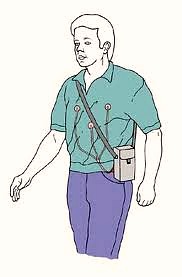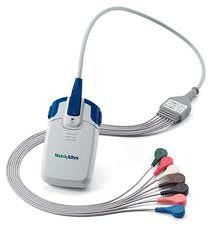Blood pressures elevating dangerously after nighttime wind turbine exposure (Australia)
Dec 28, 2010
Clinical monitoring after a night of wind turbine noise exposure reveals dangerously high blood pressures (called “hypertension”), including in people with no prior history of hypertension—up to 4 km (2.5 mi) distance.
·
—Sarah Laurie, MD
Medical Director
Waubra Foundation
South Melbourne
Australia
Preliminary results of investigations (24-hour blood pressure Holter Monitor) are showing that some people living adjacent to turbine developments (distance of 3 to 4 km = 1.9 to 2.5 mi) are getting episodes of hypertension (high blood pressure) at night, sometimes dangerously high, while they are asleep and while the turbines are operating. As this will mostly be asymptomatic, people generally will be unaware that it is happening to them until this investigation is done on a night when the turbines are operating.
Notice, these patients do not necessarily have previously diagnosed hypertension; they and their family physician might think their blood pressure is normal, since it is normal when measured in the doctor’s office, during the day, well away from the turbines.
There is peer reviewed published experimental evidence which shows that infrasound can cause elevations in blood pressure and heart rate of humans:
Chen Yuan Huang Qibai and Hanmin Shi, “An investigation on the physiological and psychological effects of infrasound on persons,” in The Effects of Low-Frequency Noise and Vibration on People, ed. Colin H Hansen (Essex, UK: C Multi-Science Publishing, 2007), pp. 303-310. Reprinted from the Journal of Low Frequency Noise Vibration and Active Control.
We suspect that infrasound emissions from the turbines may be involved, or there may be another mechanism which we are unaware of yet.

Wearing a Holter Monitor (electrodes placed under the shirt). There is also a blood pressure cuff (not shown).
This information is not yet out in the public domain, nor is it yet published in any peer reviewed journal. However, it is important information to share with your family physician and cardiologist, particularly if your blood pressure has been high or difficult to control since the turbines started operating—or even if your blood pressure is “normal.” It will be important to provide information, if you can, about when the turbines are operating during the 24 hour period while you are having the Holter Monitor test done, and how far away you are.
Again, these impacts have been reported up to 4km away from the nearest turbines, and could well be happening for people who live farther away.
If you would like to share those results (deidentified), please scan and email to research groups in your area who start to look into this issue, or to Dr Sarah Laurie, email sarah@waubrafoundation.com.au.




Comment by Johana on 12/28/2010 at 5:01 pm
Thank you, so much for creating this comprehensive archive of videos which will inform millions of people about the struggle for democracy and for people’s lives and health now and in the years to come.
Comment by noury didier on 12/29/2010 at 5:53 am
Voila la raison pourquoi nous sommes obligés
De doubler la dose de médicament contre l’ypertension
La nuit les battements de coeur sont comme le bruit des éoliennes
Les services de l’état ne prenne pas les choses aux sérieux
Editor’s attempt at translation: “Here’s the reason why we are obliged to double medication doses against hypertension. Nighttime heartbeat becomes similar to the beat of the turbines. State agencies refuse to take these matters seriously.”
Comment by David R. Lawrence, MD on 01/06/2011 at 7:10 pm
Animal and human studies cataloged in a publication by The Health Protection Agency in the UK (“Health Effects of Exposure to Ultrasound and Infrasound,” Feb 2010) support adverse physiologic effects from infrasound when animals/subjects are exposed repetitively for short durations at dBA of at least 95, with less concrete data for “Wind Turbine Syndrome” (US) or “Vibro Acoustic Disease” (Europe).
As of yet I am unable to find persuasive data to set perimeters beyond 300-400 meters as accepted by some authorities, or 1000 feet as proposed as an accepted standard in the US by Robert O’Neal in a paper submitted to the Acoustical Society of America 159th Meetinng Lay Language Papers. The study outlined in this article is preliminary and subject to peer review before being accepted as scientific. Is there data that demonstrates different levels of infrasound at various setbacks allowing one to objectively predict the safety/hazard at each distance?
We in CT are just beginnig our fight.
Editor’s reply: I doubt the UK “Health Protection Agency” did anything of substance on either WTS or VAD. The dBA measurements are silly. VAD is not the European version of WTS. “As of yet I am unable to find persuasive data to set perimeters beyond 300-400 meters”—what data have you looked at?—“or 1000 feet as proposed as an accepted standard in the USA by Robert O’Neal”—who is Robert O’Neal and what are his credentials and how did he arrive at 1000′? What’s “subject to peer review before being accepted as scientific” mean? (Mind you, you’re talking to someone who has done more peer reviewing than most scholars.) “Is there data that demonstrates different levels of infrasound at various setbacks allowing one to objectively predict the safety/hazard at each distance?” No, there’s isn’t. It’s a silly question, to begin with, when you’re talking about wind turbines. Basically, irrelevant.
Have you read Dr. Pierpont’s book? What about her “Wind Turbine Syndrome and the Brain“? (Something tells me the answer to both is “no.”)